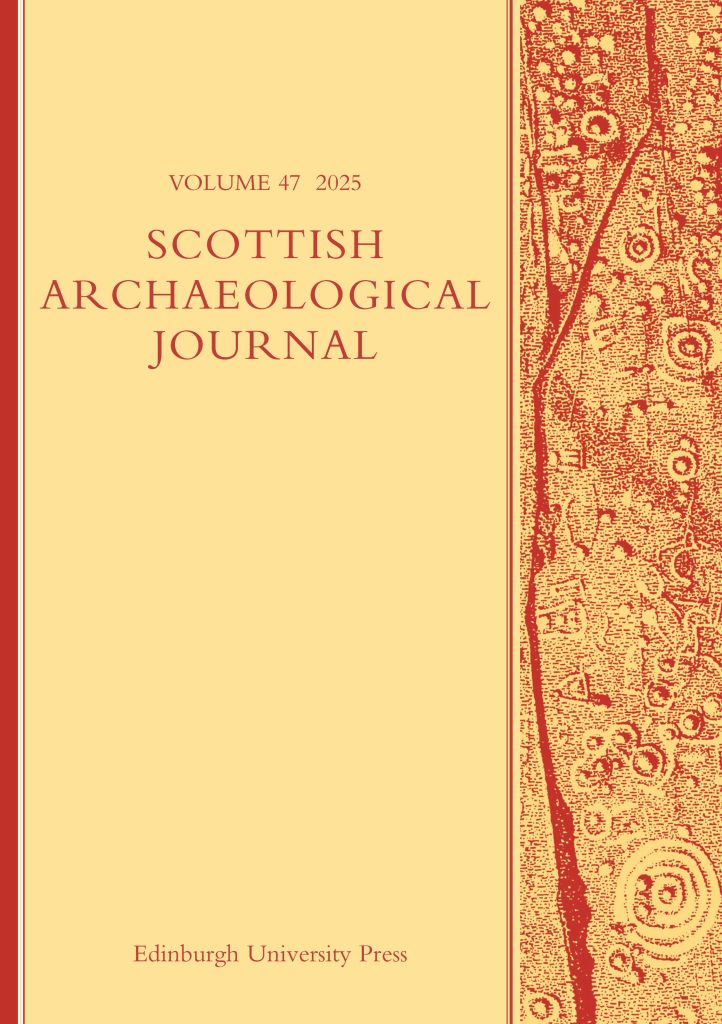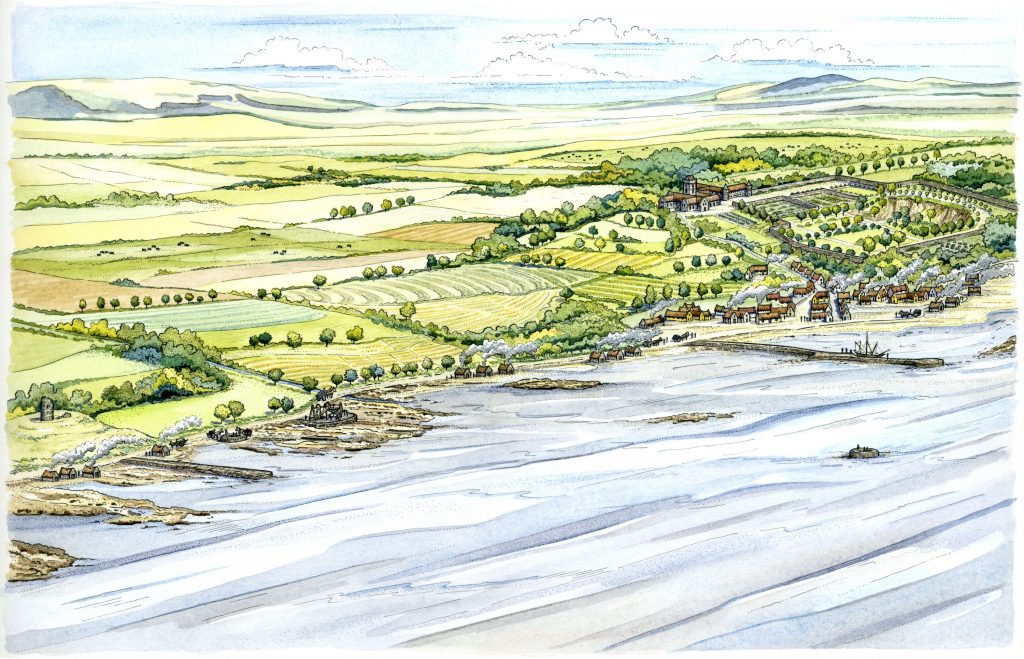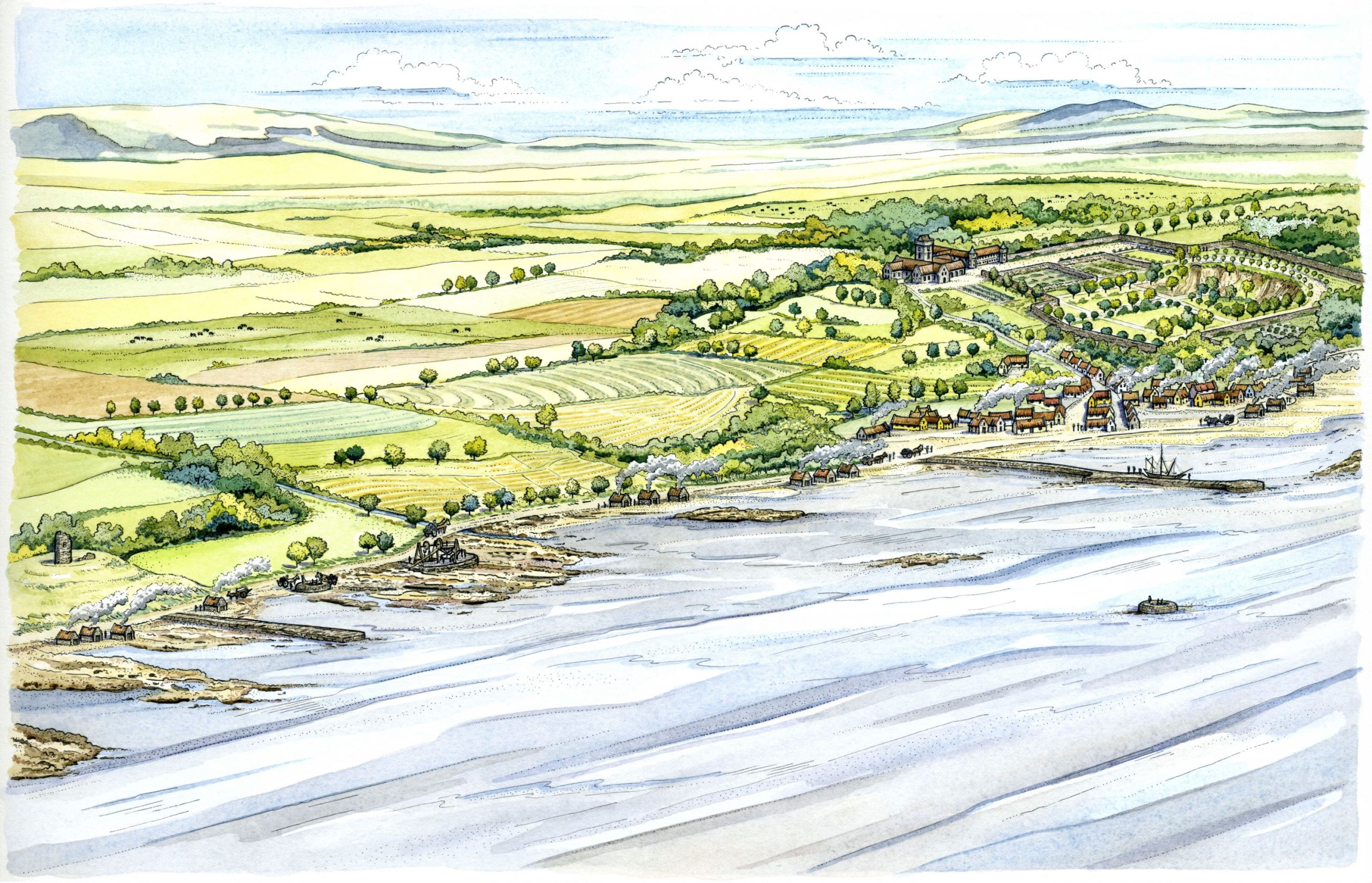
By Donald Adamson and Robert Yates

Donald Adamson and Robert Yates are the authors of the article ‘The Moat Pit Re-Visited: The Coal Mining Enterprise of the Bruce Family in the Sixteenth and Seventeenth Centuries in Culross, Fife’ in Scottish Archaeological Journal.
In one sense, the application of the title, ‘Cradle of Scottish Industry’ seems almost trite. It could be the throwaway line of an advertising agency. However, we would argue that such a designation has a purpose. It serves to remind people that picture-postcard-perfect Culross was created as a village to serve the needs of those who worked in dirty, dangerous, industrial jobs.
Long before Culross became a tourist destination, it was where meaningful engineering challenges were overcome. Until now, the scale of the mining operations there has not been fully appreciated. It was in Culross that engineer Sir George Bruce (1550-1625) pioneered the Moat Pit, a revolutionary solution for undersea mining. It has also not been fully understood that there was not just one moated mine shaft at Culross (albeit a very famous one) but in fact half a dozen. Bruce did not ‘bet the store’ when he sunk the Castlehill Moat Pit in 1590. The principle of two linked shafts, with one situated below the high tide mark, had probably already been tested as a prototype by Bruce with the St Mungo Pit which was linked underground to the nearby Nun’s Pit. More than that, it is now clear that the Culross colliery – operated by Bruce – was substantial in Scottish terms and bears comparison to the very biggest coal mines in Tyneside at this period.
A major problem solved by Sir George Bruce and his family was that of mine drainage, including at depths which had not hitherto been achieved. Thus, the well-known Egyptian Wheel was engineered. Power for drainage came not just from horses but also sophisticated water wheels utilising both dams and, later, aqueducts. For the modern reader, Bruce’s use of tidal power might be even more unexpected and the fact that the tidal engine still exists in the form of a huge tidal pond (long since relegated to the picturesque) is a considerable bonus. These were developments which were significant not only on a Scottish level but also on a global scale, and Bruce is rightly accorded a place in the Scottish Engineering Hall of Fame.
Sir George Bruce was not just a brilliant engineer; he was also an astute businessman. The Dutch revolt against Spain gave him a market opportunity to make salt, which was to become a highly profitable product. By turning pan coal into salt, he added value and reduced transport costs. To this would be added domestic coal, sold to London and Amsterdam and a range of other towns and cities around the North Sea and Baltic, and transported in Bruce’s own ships along with the salt. Further investment in metal working and quarrying and stone extraction supported his core businesses and emphasised the international reach of his commercial operations. It should also not be a surprise that some of Scotland’s earliest mining maps were created around this centre of enterprise.

Credit: Donna Scott FSAI (info@donnascott.co.uk)
By the early seventeenth century, Culross and its hinterland was employing five hundred people, with a total population of perhaps fifteen hundred. Royal burgh status was secured in 1592. Its population was salt makers, coal miners, smiths, quarrymen, carters and sailors. We argue that they can claim fairly to be the inhabitants of Scotland’s ‘Cradle of Industry’. This is a title which rests on both engineering excellence and commercial acumen. Other towns and villages around the Firth of Forth became significant producers of coal and salt in the seventeenth century but it was at Culross that the related engineering and scientific challenges were first overcome and married to the outstanding business acumen of Sir George Bruce.
The legacy of industrial advancement in Culross can be seen there today. It lies in its built architecture, its two great houses (one open to the public), evidence of six early coal shafts (one of which appears and disappears twice daily with the tide) and the wonderful Bruce chapel in the Abbey. It is central to the stories of two earldoms: that of Elgin and Kincardine and that of Dundonald. Perhaps most crucially, it also explains the industrial and mining heritage of many people in West Fife today.
Read the full article, ‘The Moat Pit Re-Visited: The Coal Mining Enterprise of the Bruce Family in the Sixteenth and Seventeenth Centuries in Culross, Fife’ in Scottish Archaeological Journal
About the authors
Donald Adamson is from Dunfermline and is descended from twelve generations of Scottish miners. He studied archaeology at Glasgow University where he obtained an MLitt and PhD. He was the author of the 2008 paper on the Moat Pit which was produced out of the dissertation for his Master’s degree. He has researched, written, and spoken on a wide range of archaeological projects across Scotland over the last 15 years. He was Non-Executive Chairman of the consultancy firm Guard Archaeology from 2010 to 2020. Donald’s early career was as a senior partner with the accountancy firm KPMG.
Robert Yates joined the National Coal Board in 1975 and later worked for International Mining Consultants, British Coal’s consultancy arm, as a Director and later Deputy MD, on coal and hard rock mining projects in N America, S America, India, Pakistan, Western and Eastern Europe and the Former Soviet Union from 1983 to 1998. In Scotland he was the Reporting Engineer for the Stock Exchange flotation of Mining Scotland’s Kincardine Drift Mine, an undersea mine adjacent to Culross. His subsequent career has been in electricity and gas consultancy; he is currently Chairman of MRC Group Consulting LLP. He has written extensively on mine restructuring and development, as well as wider energy issues. By background he is an Industrial mathematician and economist who studied at Sheffield and Warwick Universities.
Explore related articles on the EUP Blog
Spotlight on Scottish Archaeological Journal
Glasgow Archaeological Society Celebrates 150 Years of Publishing
Juteopolis?: Dundee’s history as a leading textile town






